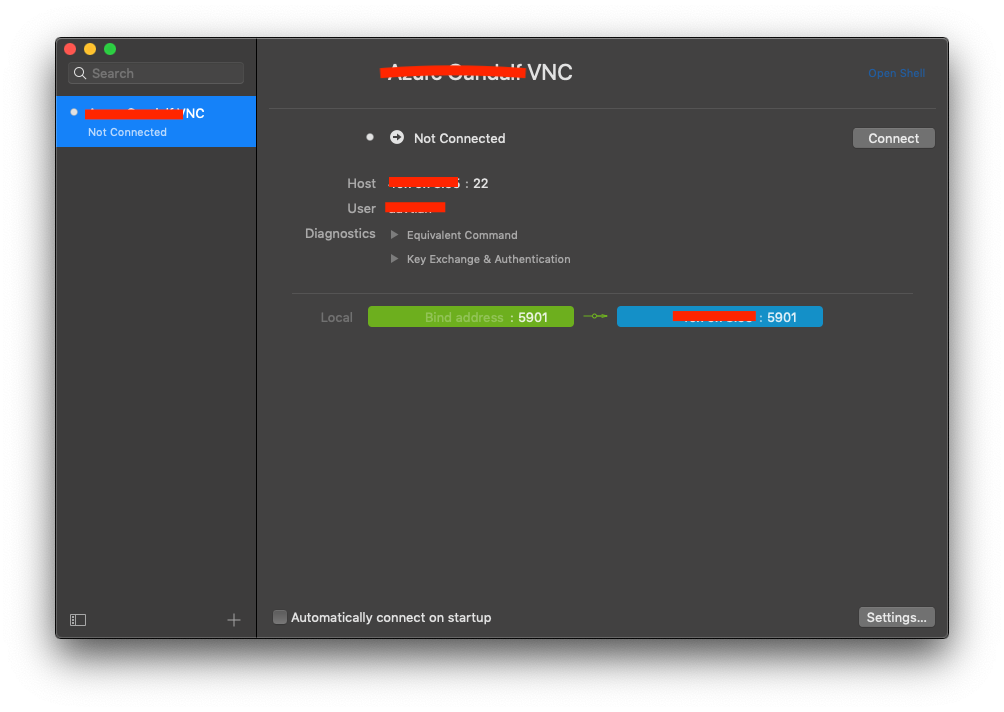


Make sure you select the Use SSH or SSL+SSL option before you connect. When you’re ready, click the Connect button. SSH Clients With Tunneling Support Open the SSVNC client and, within the main SSVNC client window, fill in the required fields. SSH Clients With Tunneling Support Open the SSVNC client and, within the main SSVNC client window, fill in the required fields. For example, Make sure you select the Use SSH or SSL+SSL option before you connect. Under VNC Host:Display, type Replace SSHusername with the username you’d use for your SSH connection, and replace remoteIPaddress with your remote desktop IP address.
#Vnc through ssh tunnel windows
SSVNC is supported by Windows and Linux operating systems. My idea was to use TightVNC viewer and SSH tunnel through the bastion host to the GUI instance. Now I can only use port 22 to the bastion host but all outgoing connections are enabled. One example is SSVNC which, while basic, will tunnel over SSH before making a VNC connection. Problem: I need to be able to access that WebLogic server via internet browser through the bastion host. Other VNC clients, however, do include SSH tunneling within the client itself. While TightVNC is a popular Windows client for VNC connections, it doesn’t support SSH tunneling within the client itself, requiring you to use PuTTY to make the connection. ssh -L 1111:localhost:5901 usernamevncserver. If your SSH connection is working correctly, TightVNC should load your remote VNC desktop window, ready for you to use.


 0 kommentar(er)
0 kommentar(er)
